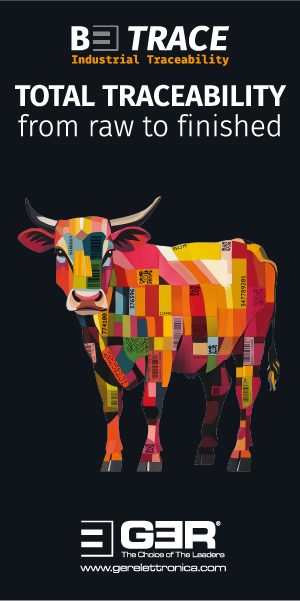Market Intelligence—02.01.24
Macroeconomics
One got the impression that there was not too much news in the economy and politics in the final weeks of last year. Wars continued to dominate and the attacks on merchant shipping in the Red Sea also had an additional impact on the global economy. Apart from that, the despots and unscrupulous leaders have not been prepared to rethink their actions in recent weeks and, quite honestly, nobody expected them to. Much worse in this context is the fact that there is a feeling that it may not yet be the end of the atrocities and suffering.
At the moment, the focus is on the Far East, where North Korea in particular is currently flirting more and more with the option of war. The issue of Taiwan is also far from over and the elections on the island could once again bring tension to the fore.
If we stick to politics and look ahead to 2024, we can see that the elections in many countries this year could potentially have major consequences. At the top of the agenda, of course, are the elections in the US, where the possibility of Mr Trump returning to the White House could once again shake up the whole world.
The financial world is completely unmoved by political problems. There, the topic of interest rates has continued to dominate in recent weeks, and the announcements of interest rate cuts in the US were particularly celebrated by the markets. Most stock markets ended 2023 not far off their historic highs, which seems somewhat surprising in view of the risks for the coming year. However, if the world returns to more peaceful times overall in 2024, there is the possibility of a solid recovery in many sectors. Hopefully, our sector could then also benefit accordingly.
At the moment, however, there are a number of points that may give cause for concern. Firstly, of course, the general security situation and the resulting negative sentiment among consumers. If you look at the security situation, the increased risk to merchant shipping in the Red Sea immediately springs to mind. Depending on the situation, shipping companies are now deciding whether they can expect their crews and ships to pass through the Red Sea and the Suez Canal. We have already seen the consequences of blocking this route with the short-term closure of the Suez Canal because of an accident in 2021.
On the positive side, however, the rise in wages and the possible fall in inflation should certainly be noted. Based on current knowledge and the very stable labour markets worldwide, we can assume that consumer purchasing power will increase. What we do not know, however, is whether they are prepared to spend their money and, if so, on what. The global security situation will certainly also have a significant influence on this.
At the moment, this general economic environment is leading to a weaker US dollar, which ended the year at a level of around $1.11 to the euro.
The gold price was also able to benefit from the overall environment and managed to stabilise sustainably above the $2,000 mark. Analysts believe that there is a realistic chance of reaching the $2,500 level this year.
Despite the tense security situation and the possible delays in shipping, the oil price was only able to benefit from the situation to a very limited extent. In the short term, levels in the region of $80 were reached again, but the price slowly crumbled again towards the end of the year and all attempts by OPEC+ to further stabilise the price through cuts fizzled out. Too many producers need the income from oil production too urgently and even though we all know that fossil fuels will become less important in the coming decades, it is now very important for many producing countries to strike a precise balance so as not to jeopardise their main source of income.
Leather Pipeline
Nothing really significant happened along the leather pipeline in the final weeks of 2023. In Europe, the Christian countries are dominated by the Christmas break and the next public holidays in China and Asia are already casting their shadows.
It remains the case that the mood in Europe in particular is very poor. Christmas retail sales fell well short of hopes and expectations and the mood among European consumers is not improving at the moment. This is partly due to war and its consequences, but also of course to many local political decisions. The most recent elections have already shown this and there are many indications that upcoming elections in Europe will also widen the rifts in societies. Much to the delight of those who welcome any destabilisation. Such an environment is generally not a good basis for positive and optimistic consumer behaviour. A large proportion of consumption now is channelled into holidays and restaurant visits, from which people expect short-term and immediate pleasure and satisfaction. People are less willing to invest in high-value consumer goods when the political climate is unstable.
This is also reflected in the luxury goods industry. Of course, money plays a subordinate role for the mega-rich on this earth and a bag costing many thousands of dollars, an expensive car or whatever other luxury goods never fail because of a shortage of financial resources. However, the number of super-rich people is not so large that the current turnover and expectations for growth could be achieved without the willingness of the upper middle class to buy luxury goods too. The forecasts that continue to be published by companies in the luxury goods industry are almost all positive or, at most, pointing to slowing growth. However, there are also studies worthy of consideration that clearly attribute the recent rise in turnover to significant price increases and less to rising volumes of leathergoods. With very few exceptions among the top brands, these studies appear quite credible.
If you look at the information that has been circulating for a long time about activities in the classic centres of production (Italy and France), you feel that your perception is confirmed. In Tuscany in particular, the absolute epicentre of leather production for luxury brands, it has long been reported that many companies are nowhere near the level of production that would meet growing volume demand. Since the spring, the opposite has been the case. Inventories are too high and orders are coming in rather slowly. The pessimists are now saying that this is far from over, that inventories are still too high, while the optimists are firmly convinced that inventories have been significantly reduced and that the road is now clear for a new, active order cycle. We believe that it is still far too early for such ideas.
In the mass markets around the world, price awareness has clearly risen again. Less brand, more discount, less impulse buying and more bargain hunting is the dominant trend at the moment. This was again evident in Christmas shopping, where the biggest sales were realised during CyberWeeks and the double 11 days, whereas sales in the weeks leading up to Christmas and in traditional bricks-and-mortar retail remained well below expectations. Consumers are still affected by the horrors of the significant price and interest rate increases, which can no longer be justified by the current facts. However, it is still true that those who (have) taken on debt for consumer goods are being hit hard by higher interest rates, whereas those who have always ensured a positive savings ratio are currently benefiting considerably. Those who are careful with their money do not tend to fall back into a spending spree.
We don’t want to spend too long looking back at 2023 at this point, because in the leather pipeline, the past is only a limited indicator of the future. We will try to summarise briefly:
- The sector continued to suffer from high inventories
- Consumption declined owing to inflation and geopolitical influences
- The European leather industry lost considerable competitiveness
- Leather as a material was unable to expand its market share
- NGOs continue to use leather, unjustifiably, as a tool for opposing meat production
- Nevertheless, the production of animal proteins is not declining significantly worldwide, leading to an oversupply of hides. This applies above all to cattle, sheep and goats.
- The leather industry suffered from falling orders and rising costs, which could only be partially offset by falling raw material costs and freight rates.
Although nothing is as difficult as predicting the future, one tries to do so every year and perhaps it is easiest to orientate oneself on what might change from last year’s trends.
- Stocks fell in the finished product import, wholesale and retail sectors. This is basically good news, as it is in any case the prerequisite for a revival of demand throughout the chain. This was not the case in the manufacturing industry or at raw material level.
- Falling interest rates and rising real incomes offer good opportunities for an improved consumer climate, but geopolitics, elections and the still dominant uncertainty among consumers remain strong negative factors. Especially for products and materials that are not essential.
- The European leather industry will not be able to reduce its competitive disadvantages in 2024 either. In addition to the costs, the further significant increase in bureaucratic requirements and the self-imposed obstacles and cost drivers for SMEs are almost insurmountable obstacles.
- Despite all efforts and its functional advantages, leather is still not gaining any market share. Mass producers are avoiding the material as much as possible. Growth as a result of additional use seems unlikely
- The vilification of leather to combat meat consumption continues. The estimated budget of NGOs in this sector is around $800 million, which is a very powerful amount. Especially when you realise that a large proportion of this money comes from political sources and as ‘ransom money’ from the industry. This means that these sources are constantly being re-fuelled.
- The production of hides and skins worldwide will not decline significantly until the end of the decade. A shortage of raw materials is therefore not to be expected in 2024 either
- The die is largely cast for the first half of the year and, with the possible exception of China, no other increases in orders are to be expected. The uncertainties for the second half of the year are very great, but there is at least a realistic chance that private consumption will pick up again significantly if the political situation remains stable. Leathergoods could then also benefit disproportionately from this if stocks could be reduced further.
The list could certainly be extended. In our view, how we deal with the concepts of traceability and sustainability will also be of decisive importance for further developments in 2024. Everything has been said about what these terms mean for leather, but their use has now taken on a life of its own and follows its own dynamic. Organisations use them to justify and maintain their existence, politicians use them to implement their ideologies and large companies use them because they believe they offer competitive advantages. The fact that hides and skins are not the cause, but merely a ‘waste event’ with no reciprocal effect, has been completely lost. NGOs and European politicians will no longer turn away from these convictions, while large companies will ,as always, be influenced by economic results. For now, however, it is very bad news for the small and medium-sized businesses that still make up the majority of the European leather industry. The sum of the burdens and the costs of the increasingly complex challenges and bureaucratic obstacles represent an almost insurmountable threat for many.
On other continents, the topic is ultimately dealt with much less dogmatically. In Asia, South America and Africa, these topics are of almost no interest to the local markets and in the US they are dealt with much more pragmatically. Above all, the interests of the local industry are given priority and, if necessary, very smart marketing solutions are found that symbolise European solutions in spirit, but in reality don’t meet them.
Our conclusion for the coming year is that the European leather industry at least will certainly face another very tough year. If things go well, opportunities will be found again through special quality, fashion or technical innovation in order to find new potential on the global markets. Within Europe, a trend reversal would be more of a sensation. If this does not succeed, we will certainly lose further market share on the global markets to our competitors, starting with the Middle East and continuing through the Far East to South America. In these regions, you have almost all the advantages on your side at the moment. Whether the realisation that leather is still far superior to alternative materials in terms of its function and properties can actually mature within Europe seems rather unlikely in the current climate. The main problem lies not only in the material itself, but in the handling and presentation of the product. Niche suppliers remain very successful in that they hardly have to fear any losses, owing to the quality of their products and the loyalty of their customers. The only danger for them is that the long arm of politics, bureaucracy and laws could take away their basis for production.
This means that the hope of an improvement in the general business situation remains limited to the other continents. Not only production, but also consumer behaviour is not (yet) so completely controlled by dogma that there is no possibility of rapid improvement. A certain amount of hope can be derived from developments in China alone, where activity has been slowly but steadily recovering since the summer of 2023. It cannot all be speculation as to what raw materials have found a market there and as much as price is the dominant factor in as always, the volume still indicates that leather continues to be appreciated by consumers in China. There is still time, therefore, before alternative materials can successfully challenge leather in terms of volume, properties and price.
We will skip our brief overview of the market for sheepskins this time. Everything that applies to cattle hides can also be applied to this sector. The high-quality sector is stable and these leathers are not playing a role for mass producers at the moment. Only the improvement that is now becoming apparent in the price of wool could possibly have an effect on sheepskins and lambskins in the longer term.
In our opinion, the split sector will certainly play an interesting role. For suede production, the split remains a very attractive and inexpensive alternative. This will only cease to apply if prices for hides don’t fall further, as the whole hide will then become cheaper than the split, as part of the whole. For some time now, we have seen articles on the market that are labelled as ‘reverse suede’, which basically means nothing more than using the flesh side as opposed to the usual use of the grain side. If the raw material price is right, there is nothing to be said against this, the function of the leather is not restricted if the technology is used skilfully and the usual major problems with the so-called ‘grain range’ do not play a role at all. However, since leather factories lack the expertise for this type of production and their machinery set-up is not actually designed for this type of production, the interest of many manufacturers in taking a greater stake in this area and exploring further possibilities is still very limited.
The collagen and gelatine sector is unlikely to offer much price support in the coming months. There is too much product in the pipeline here too and the balance between supply and demand is currently severely disrupted. Here too, there may be a tendency to reduce production in Europe and focus more on availability and more favourable production costs in other regions. It is highly likely that we will also see possible decisions in this direction in the coming year.
Market developments in the coming weeks will certainly also be strongly influenced by developments in the currency markets and even more so by developments in the shipping industry. Almost all shipping companies have now announced significant surcharges on shipments at the turn of the year. For deliveries that had already been planned and booked, this will result in considerable additional costs that are completely unclear as to who will ultimately bear them. These surcharges will then have to be recalculated for new transactions and deliveries and will not simplify price negotiations.
The surcharges affect everyone, as they are levied in both directions. The fact that the shipping lines see this as a welcome opportunity to subsidise the significant fall in freight rates should come as no surprise to anyone. The main problem certainly lies in the fact that it is not at all clear at the present time, and therefore not at all clear for the coming months, whether the safe sea route through the Suez Canal can be maintained. If further merchant ships are attacked, with or without military protection, the route through the Suez Canal will probably be severely restricted for a long time. Although this would stabilise after a few months, even with the diversions around the Cape of Good Hope, longer transport times and higher costs with a possible phase of supply bottlenecks would make business more difficult.
In Asia, coinciding with the end of the Christmas holidays, companies and consumers are preparing for the interruption caused by the Chinese New Year. In any case, the next few weeks will provide greater insight into the optimism and planning with which manufacturers in China are entering the second quarter. Under normal conditions, the first quarter is still characterised by high production until the end of the quarter, with a significant decline only beginning in the second quarter.
The elections in Taiwan will take place in January and, depending on the outcome, will certainly have an impact on the general mood in China. The prospect that the Chinese government could use the outcome of the election as an opportunity to further aggravate the already tense relationship would be an additional burden on the outlook for the first half of 2024.
The further behaviour of North Korea, which will most certainly be strategically controlled from Beijing, will also have an impact on the situation in Asia and possibly the world.
As much as the financial markets are taking the falling interest rates as an opportunity to look positively into 2024, we believe that an attentive look at the diverse tensions on this planet will be at least as important. We are therefore not entirely positive about the coming months and you would have to be an unreserved optimist to be blind to the risks.
In any case, we wish all our readers a healthy, peaceful 2024 and a lucky hand for the difficult business decisions that lie ahead.
















